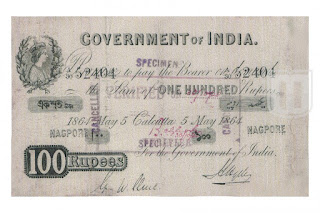What defines a particular country? There are various aspects that can be considered when you are trying to understand about a country. One of it is its history; the other is its geography. Then comes other aspects like wildlife, sociology, culture, tradition and the list goes on. Every country has its own identity which makes it unique in some ways. Architecture also plays a major role here. That's the reason why Greece has its own style of architecture, Arabian nations have their own style and English countries can be distinguished by its unique architecture as well.
Many a times a country is ruled by emperors from a different land, who came in and conquered a particular area. Influences play a very important role here. People living in a particular area would be highly influenced by the culture and tradition of that location. So how do you go about understanding these beautiful aspects of a country? There are many ways of doing this. Some are extremely complex while others are outright simple. Let's take a look at one of the easier ways of approaching this subject. For example if you want to gain knowledge about a country like India then you could start studying about stamps of India from Mintage World.
Seems a bit illogical? Well, it is not really so. Indian stamps portray subjects that touch on an array of topics. The moment you start collecting rare Indian stamps, you will definitely feel the need to learn about the various depictions on them. Mintage World is the website where you can learn about Indian Stamps. If you are a topical collectors then rare Indian stamps is literally a sea out there. They cover different areas like personalities, science, technology, history. There are stamps of India that have shown dogs on them. So if you are a dog lover, then all you will have to do is start collecting them and start reading on all these breeds of Indian dogs. Then there is a series of Indian commemorative postage stamps which commemorate trains and engines. I know about a few friends who are absolutely crazy about trains. Now imagine if they find a stamp featuring old trains on them! They would definitely love them all.
 |
| Image Courtesy: mintageworld.com |
Understanding what you like as a person is very important as well. Many youngsters these days simply follow what others are doing just because it has become a trend. What happens when you follow a trend is that you don't analyse what it that you really like from the bottom of the heart is. You keep doing something you don't really like, all your life and before you even realise, it would be too late. So how you understand who you really are as a person? It is not rocket science. You need to sit back and relax first. You shouldn't feel the compulsion of doing anything. Close your eyes and think of your childhood days, what you liked doing back then and what your real strengths were as a person. You will slowly find a pattern in all those events of your life. All you have to do then is connect the dots search for truth. What brings a smile on your face, what makes you happy internally, what is it that charges you up? Once you find an answer to these questions, life becomes easier. Finally after you have arrived at a conclusion, you can start collecting rare Indian stamps based on your topic of interest. Not just Indian stamps, you can also stretch the barrier a bit and indulge in collecting stamps of other countries too.
So we have covered two things here. One is that you start learning about your own country India in a more fun way by collecting Indian stamps. The other is that you have also made that effort to actually find out what you really like in life. Almost like a self-discovery. I think that kids should be introduced to stamps of India at a very young age so that they are also aware of a new of learning things. Kids, being the way they are will be bound to get bored very easily. When you show them stamps of India, they will definitely start getting more excited and would want to learn with an alert mind. Not just kids actually, anyone and everyone who starts collecting stamps of India will soon fall in love with them.
The hobby not only enlightens you about different things in life but also doesn't allow you to sit idle. You can start gazing at your amazing collecting of stamps of India whenever you want and side by side also start reading about topics that have been showcased on them. In a way you are not whiling away your time doing something that is not very useful.
So be it wanting to know about your country, understanding your own likes or keeping yourself busy in a good way, collecting stamps of India taught me a whole lot of things!
















